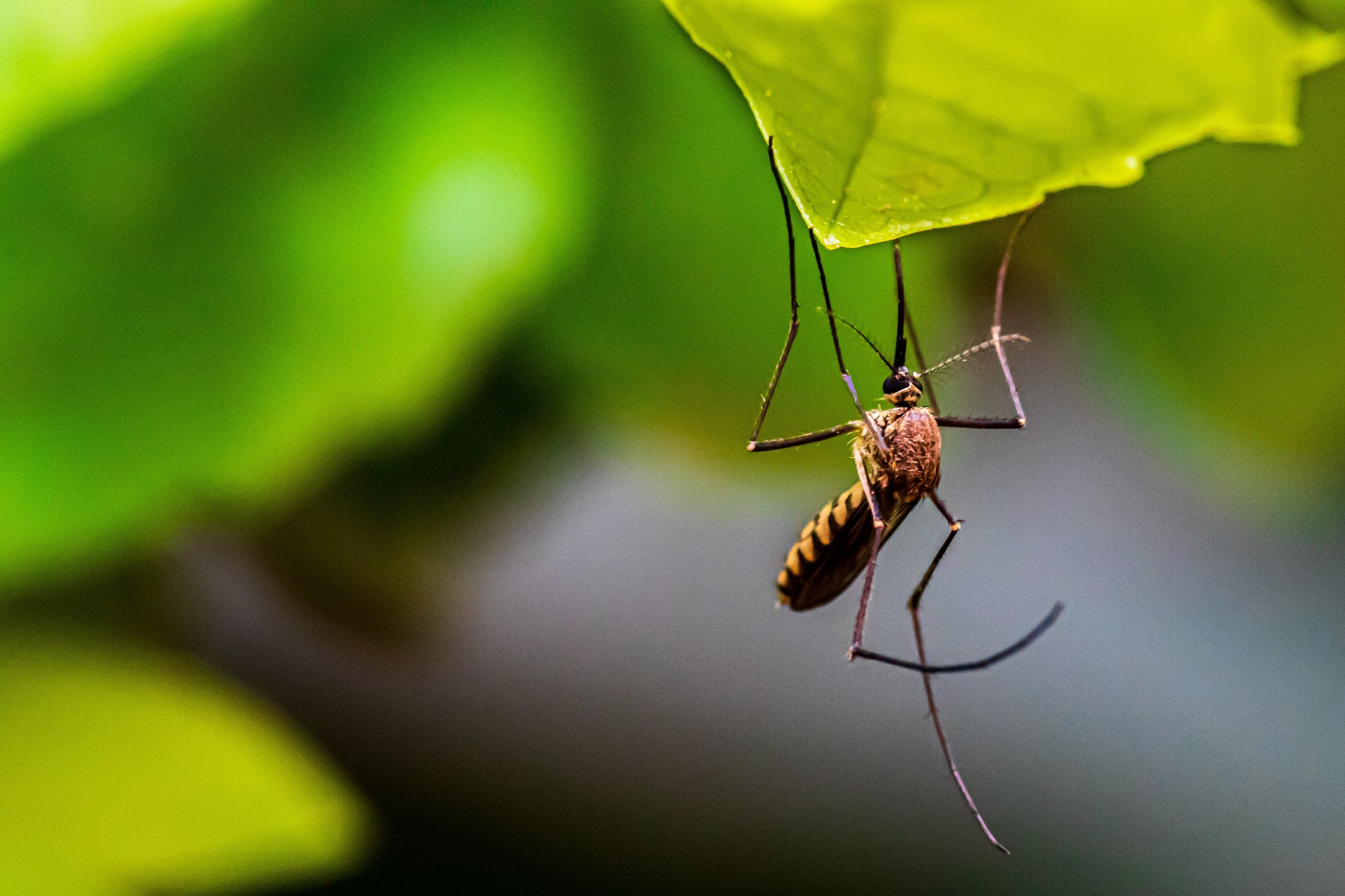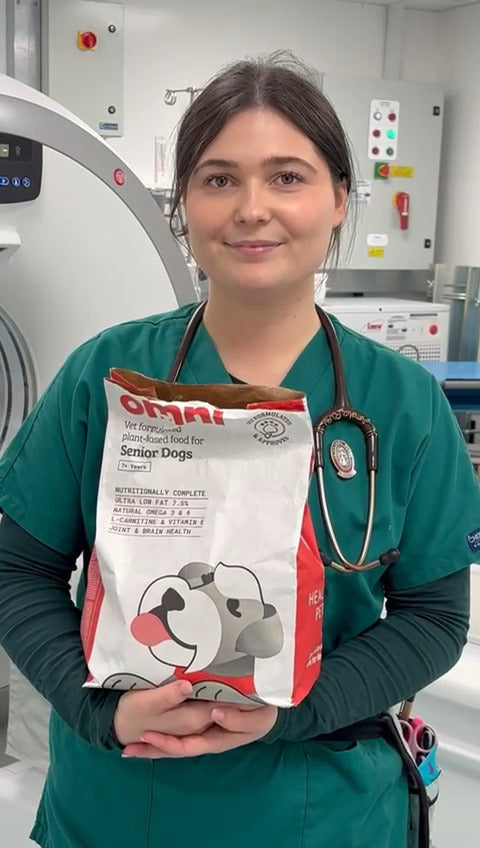Vegan diets for dogs with Leishmania?

Dog guardians caring for a dog with leishmania will likely be aware that a low purine diet is a key part of managing the condition, but why is this?
A brief overview of Leishmania to start...
Leishmaniasis is a condition caused by a protozoa (single celled parasite) called Leishmania. It’s transmitted through sandfly bites to dogs, cats, animals and humans. Luckily, it’s not an endemic condition in the UK thanks to our colder climate, but commonly found in warmer countries such as those in the Middle east, the Americas, the Mediterranean, South east Asia and Africa (1). We do need to be more aware of this condition, however, as we’re seeing cases rise with infected rescues from abroad.
The clinical signs and severity of the condition can vary, and it can take months to over a year before becoming a noticeable problem. Leishmania can spread bodywide- affecting everything from skin, nails, bone marrow, kidneys, liver and spleen to name a few examples – which means the symptoms can be hugely variable. Some dogs get scabby pads, faces and bleeding noses, whilst others progress to more serious symptoms of kidney disease: drinking and urinating excessively, weight loss and vomiting.
Leishmaniasis can be diagnosed through blood tests, urine tests and biopsies, and treatment is usually lifelong (2).
Medication protocols must be decided on a case by case basis, and takes into consideration the stage of disease, severity of leishmaniasis and the symptoms your dog is showing. Your vet may discuss using allopurinol in combination of miltefosoine or meglumine antimonate. Antibiotics may be required if the skin lesions become infected , steroids if your dog develops immune mediated kidney or eye problems, and supportive treatment if your dog’s kidney functions deteriorate (3).
SO, where does diet come into this?
Unfortunately, dogs cannot be cured of leishmaniasis, but we monitor them closely and manage the disease progression and symptoms with a variety of drugs, one of them being allopurinol. This drug is given for 6-12 months at a time, and can increase the risk of xanthine urinary stone formations. Stones can develop in the bladder or kidneys and can result in painful urination, leaking urine, blood in urine, kidney disease, and increase the risk of infection. They can only be diagnosed on ultrasound, and usually need surgical removal.
To avoid urinary stone formation, vets will advise to reduce the level of the amino acid ‘Purine’ in their diet. This is because Purine is a building block for the xanthine crystals. Purine is typically found in the highest concentrations in fish, seafoods, red meat liver, kidneys, beef, lamb, pork etc. It is also present in plant ingredients like azuki beans, seaweed, soybeans, tofu, broccoli, cauliflower, buckwheat, parsley and spinach but in lower concentrations.
Where does Omni come into this?
Whilst there is no leishmania specific diet, plant based diets, such as Omni, are naturally low in purines compared to traditional meat based dog food so could be a viable option for consideration.
Whilst further analysis and research is required to provide a definitive answer, choosing a diet with low purine content and normal protein levels (3) should be a key part of successfully managing the condition. Whilst some guardians may opt for home cooking to reduce purine concentrations, Omni has the added benefit of being nutritionally complete and readily available. We also recommend taking the regular precautions recommended for any dog on medications such as allopurinol (increasing water intake to keep urine dilute and less saturated with crystals, and regularly monitoring urine for the presence of microscopic crystals). If however, your dog already suffers from xanthine crystals in the urine, we do not recommend using Omni as at this stage of the condition. Instead, a low protein diet should be considered.
What can I do to prevent my dogs getting leishmaniasis?
Use sandfly prevention if travelling abroad with your dogs to endemic areas. This may come in the form of a repellent collar or a spot on treatment. There are vaccines that are given on an annual basis for dogs living in endemic areas, but they don’t prevent infections. Rather, they train the body to make the appropriate immune response to manage the condition better- therefore should still be used in combination with an insect repellant. It’s also key to minimise exposure to sandflies - avoid leaving your dog outside at dusk and dawn, in wooded areas, particularly during warm seasons. Keep them indoors with you at night, shut windows and doors, and use insect nets for yourself and your dogs.
Remember, our Omni life stage diets are vet formulated to be nutritionally complete, to ensure that your dog is getting all the nutrients they need to thrive at any stage of their life. Not only that, but we use high quality fruit and vegetables to ensure we are feeding our beloved pets the good stuff we’d want to eat also!
If you have any concerns about your dog’s health or wellbeing, why not reach out to our vet and nutrition team to see if we can be of any help.
- World Health Organisation (2023) Available at :https://www.who.int/news-room/fact-sheets/detail/leishmaniasis (Accessed: 15th February 2023)
- Morales-Yuste.M et al. (2022) ‘Canine Leishmaniasis: Update on Epidemiology, Diagnosis, Treatment and Prevention’, MDPI; 9 (8) pp387. Available at https://www.mdpi.com/2306-7381/9/8/387 (Accessed: 15th Februrary 2023)
Barker.E/ Langford Vets (2021) Leishmaniasis. Available at: https://www.langfordvets.co.uk/media/2397/leishmania.pdf (Accessed: 15th February 2023)







 85 Great Portland Street, 1st Floor, London, W1W 7LT United Kingdom
85 Great Portland Street, 1st Floor, London, W1W 7LT United Kingdom





